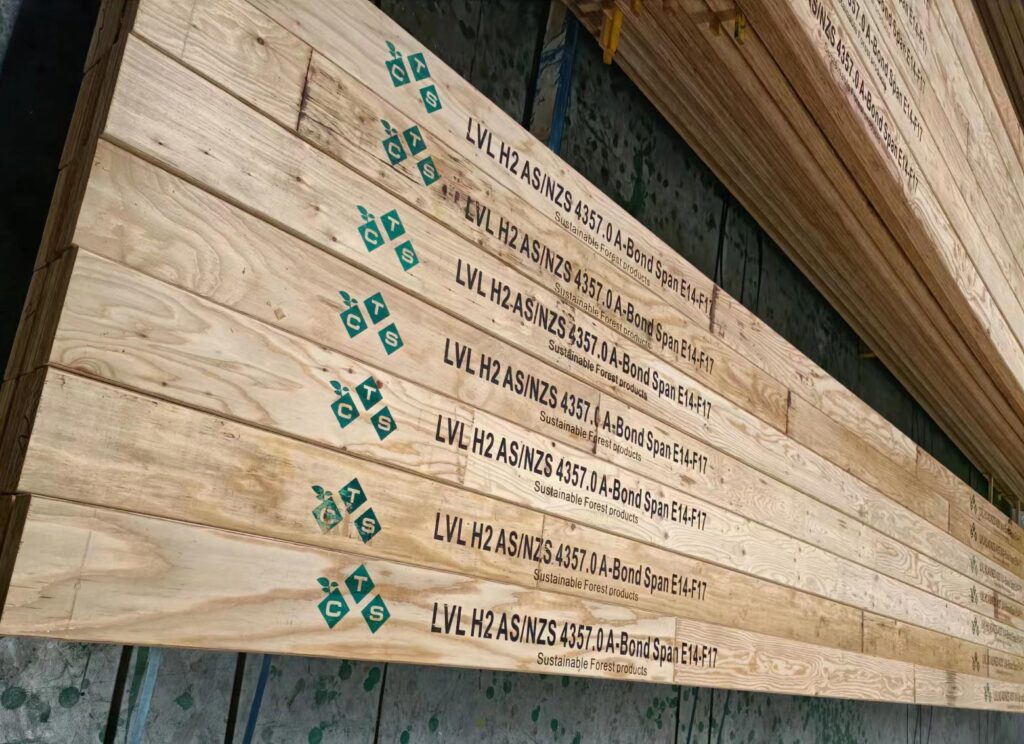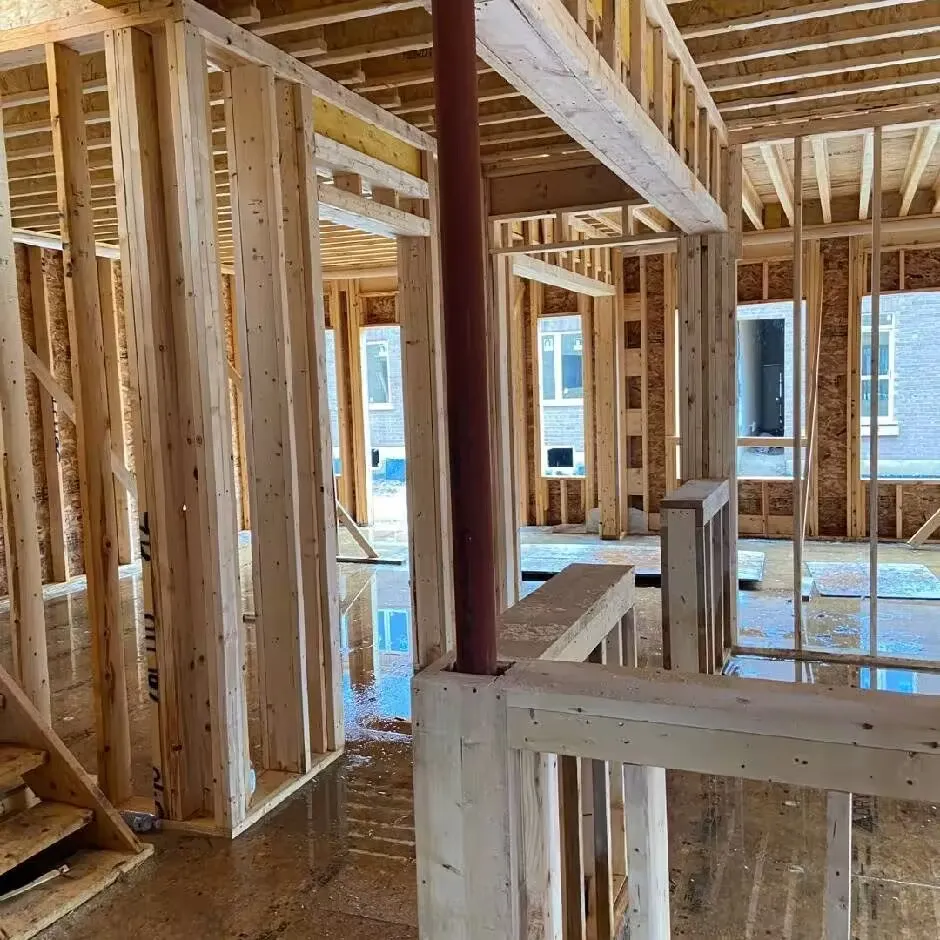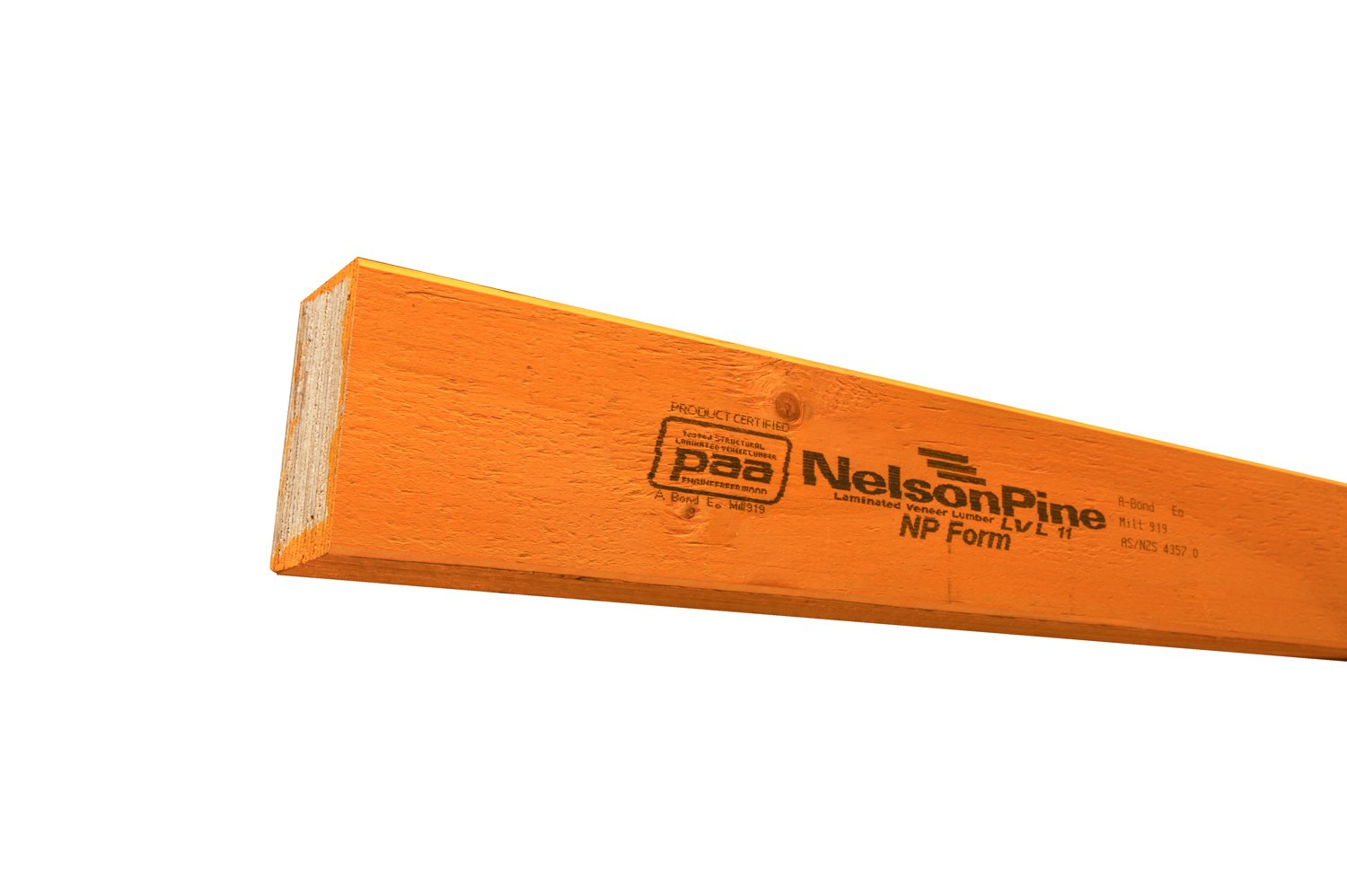LVL formwork components play a crucial role in the construction industry, providing a strong and reliable support system for concrete structures. Their longevity and durability are key factors in determining their effectiveness and cost-effectiveness. Understanding the characteristics, factors influencing longevity, and techniques for enhancing durability are essential for successful construction projects. In this article, we will delve into the intricacies of LVL formwork components, explore the factors that impact their longevity, discuss methods of assessing and improving their durability, and glimpse into future trends in this field.
Understanding LVL Formwork Components
LVL formwork components are a type of engineered wood made from multiple layers of wood veneer bonded together with adhesives. They are commonly used in the construction industry for temporary structures such as concrete formwork. The versatility of LVL formwork components makes them a popular choice for various construction applications.
When it comes to the construction industry, precision and reliability are paramount. LVL formwork components play a crucial role in ensuring that concrete structures are built with accuracy and strength. These components are meticulously designed to withstand the pressure and weight of wet concrete, providing a stable framework until the concrete cures and achieves its full strength.
Definition and Use of LVL Formwork Components
LVL formwork components are essential for creating temporary molds that hold wet concrete in place until it sets and hardens. They provide support and shape to the concrete, ensuring the desired structure is achieved. LVL formwork components are used in a wide range of projects, including residential buildings, commercial complexes, bridges, and tunnels.
Moreover, the adaptability of LVL formwork components allows for intricate designs and shapes to be formed with ease. From curved walls to unique architectural features, these components enable construction teams to bring creative visions to life while maintaining structural integrity.

Key Features of LVL Formwork Components
LVL formwork components exhibit several key features that contribute to their longevity and durability. Firstly, their high strength-to-weight ratio provides excellent load-bearing capacity while minimizing weight-related challenges during construction. Secondly, their dimensional stability and resistance to warping ensure consistent performance over time. Lastly, their compatibility with various surface finishes makes them suitable for a range of architectural designs.
Additionally, the eco-friendly nature of LVL formwork components is worth noting. As a sustainable building material, LVL is sourced from responsibly managed forests, making it a preferred choice for environmentally conscious construction projects. The recyclability and renewability of LVL further enhance its appeal in an industry that is increasingly focused on reducing its carbon footprint. Learn more about carbon footprint click here.
Factors Influencing Longevity of LVL Formwork
The longevity of LVL formwork components is influenced by various factors, ranging from material quality to environmental conditions. Understanding these factors is crucial for selecting the right components and implementing appropriate maintenance practices.
When considering material quality, it is not just the type of wood species used that matters, but also the specific characteristics of the wood. For instance, the density, grain orientation, and moisture content of the wood can all play a role in determining the durability of LVL formwork components. Manufacturers often conduct thorough testing and analysis to ensure that the raw materials meet the required specifications for optimal longevity.

Material Quality and Longevity
The quality of the raw materials used in manufacturing LVL formwork components significantly impacts their longevity. High-quality wood species, proper adhesive usage, and stringent manufacturing processes enhance the resistance of LVL formwork components against decay, deformation, and wear. Therefore, it is essential to source LVL formwork components from trusted manufacturers who adhere to strict quality standards.
In addition to the raw materials, the manufacturing process itself plays a critical role in determining the longevity of LVL formwork components. Factors such as press time, temperature, and pressure during the lamination process can affect the structural integrity and longevity of the components. Manufacturers employ precise control measures and quality assurance protocols to ensure that each LVL formwork component meets the required standards for durability and longevity.
Environmental Impact on Longevity
Environmental conditions such as temperature, humidity, and exposure to moisture can affect the longevity of LVL formwork components. Extreme temperatures, high humidity, and prolonged exposure to moisture can lead to accelerated degradation of the components. Implementing appropriate protective measures, such as sealing the edges, regularly inspecting the components, and ensuring proper storage, helps mitigate the environmental impact on their longevity.
Furthermore, the design and construction practices on the job site can also influence the longevity of LVL formwork components. Proper handling, installation techniques, and formwork stripping procedures can impact the structural integrity and overall lifespan of the components. Training construction personnel on best practices for handling and maintaining LVL formwork can contribute to extending their longevity and ensuring safe and efficient construction processes.
Durability of LVL Formwork Components
Durability is another critical aspect that affects the performance and lifespan of LVL formwork components. Assessing their durability indicators and adopting best practices for maintenance and care are paramount to ensuring their long-lasting performance.
When considering the durability of LVL formwork components, it is crucial to understand the environmental conditions they will be exposed to. Factors such as exposure to sunlight, moisture levels, and temperature fluctuations can all impact the longevity of these components. For instance, prolonged exposure to direct sunlight can lead to surface degradation and reduced structural integrity over time. Therefore, proper protection from harsh environmental elements is essential to maintain the durability of LVL formwork components. Learn more about durability of LVL formwork components visit at https://www.fushiwoodgroup.com/application-lvl-products-are-mainly-used.html.
Assessing Durability: Key Indicators
Several key indicators can help evaluate the durability of LVL formwork components. These include surface condition, structural integrity, resistance to mechanical stress, and adherence to dimensional stability. Regular inspections should be conducted to identify any signs of degradation or damage, and appropriate actions should be taken promptly to mitigate potential risks and extend the components’ lifespan.
Furthermore, understanding the load-bearing capacity of LVL formwork components is crucial in assessing their durability. By ensuring that these components are not subjected to loads beyond their specified limits, the risk of structural failure and premature deterioration can be significantly reduced. Properly calculating and distributing loads on LVL formwork components is essential for maintaining their long-term durability and performance.
Enhancing Durability: Best Practices
To enhance the durability of LVL formwork components, it is essential to adopt best practices for their maintenance and care. Routine cleaning, repair of minor damages, and proper storage are simple yet effective measures that can significantly prolong the lifespan of these components. Additionally, implementing advanced care techniques, such as applying protective coatings, using anti-adhesive agents, and utilizing form release agents, can provide an extra layer of protection against wear and tear.
Collaborating with industry experts and following manufacturer recommendations for the maintenance and care of LVL formwork components can further enhance their durability. By staying informed about the latest advancements in materials and techniques, construction professionals can ensure that their formwork systems remain durable and reliable throughout their lifespan.
Maintenance and Care for LVL Formwork Components
A proactive approach to maintenance and care is crucial in ensuring the longevity and durability of LVL formwork components. By following routine procedures and implementing advanced care techniques, construction professionals can maximize the lifespan of these components, thereby reducing replacement costs and enhancing construction efficiency.
Proper maintenance not only extends the life of LVL formwork components but also contributes to the overall safety of construction projects. Regular upkeep ensures that the formwork remains structurally sound, reducing the risk of accidents or failures during concrete pouring and curing. By prioritizing maintenance, construction teams can uphold high safety standards on site, protecting both workers and the integrity of the structure being built.
Routine Maintenance Procedures
Routine maintenance procedures for LVL formwork components involve regular cleaning, inspection, and repair. Removing dirt, debris, and concrete residue keeps the components in optimal condition. Inspecting for cracks, splits, or signs of wear helps identify potential weaknesses that can be addressed promptly. Repairing minor damages with appropriate adhesives or filling compounds prevents further deterioration and ensures the components remain sturdy and reliable.
Additionally, proper storage of LVL formwork components when not in use is essential for maintaining their quality. Storing the components in a dry, well-ventilated area away from direct sunlight and moisture helps prevent warping, mold growth, or other forms of damage. Organizing the components systematically also aids in quick retrieval and assembly, streamlining the construction process.
Advanced Care Techniques for Prolonged Durability
In addition to routine maintenance, advanced care techniques can further prolong the durability of LVL formwork components. Applying protective coatings, such as sealants or preservatives, shields the components from moisture and environmental elements. Using anti-adhesive agents on the surface helps prevent concrete adhesion, making cleaning easier and reducing damage risks during dismantling. Utilizing form release agents improves formwork removal and prolongs the lifespan of the components.
Furthermore, incorporating innovative technologies like digital monitoring systems can revolutionize maintenance practices for LVL formwork components. Real-time data on usage, stress levels, and environmental conditions can help construction teams anticipate maintenance needs and schedule repairs proactively. By embracing technological advancements, construction professionals can enhance the efficiency and effectiveness of their maintenance strategies, ultimately optimizing the performance and longevity of LVL formwork components.
Future Trends in LVL Formwork Components
The construction industry is continuously evolving, and so is the field of LVL formwork components. Exciting advancements and emerging trends are shaping the future of these components, focusing on technological innovations and sustainability. Learn more about Creative Uses of LVL Formwork in Architectural Designs visit at https://hanningtonsestate.com/creative-uses-of-lvl-formwork-in-architectural-designs/
Technological Advancements and Their Impact
Technological advancements, such as the use of advanced adhesives and surface treatments, are improving the performance and durability of LVL formwork components. Innovations like self-healing materials and smart monitoring systems are being explored, offering potential solutions to enhance longevity and reduce maintenance requirements. For example, researchers are developing self-healing adhesives that can automatically repair small cracks or damages in LVL formwork components, ensuring their structural integrity over time.
In addition, smart monitoring systems are being integrated into LVL formwork components to provide real-time data on their condition and performance. These systems can detect changes in moisture levels, temperature, and load distribution, allowing construction professionals to identify potential issues before they become major problems. By leveraging this data, proactive maintenance and repair strategies can be implemented, maximizing the lifespan of the components and minimizing downtime.
Incorporating digital technologies, such as Building Information Modeling (BIM), enables more precise planning and optimization of LVL formwork usage, leading to improved construction efficiency. BIM allows construction professionals to create detailed 3D models of the formwork system, enabling accurate visualization and simulation of the construction process. This technology facilitates better coordination between different trades, reduces errors, and enhances overall project management.
Sustainability and LVL Formwork Components
As sustainability becomes increasingly important in the construction industry, LVL formwork components offer eco-friendly alternatives. The use of sustainably sourced wood, natural adhesives, and recyclable materials aligns with the principles of sustainable construction. Manufacturers are actively exploring ways to reduce the environmental impact of LVL formwork production by implementing efficient manufacturing processes and utilizing renewable energy sources.
Furthermore, prefabricated LVL formwork components reduce on-site waste and enhance construction speed, minimizing the environmental impact. These components are manufactured off-site under controlled conditions, ensuring high-quality and precise dimensions. By reducing the need for on-site cutting and assembly, construction projects can minimize material waste and improve overall project efficiency.
Moreover, the durability and longevity of LVL formwork components contribute to sustainable construction practices. By using durable materials that can withstand multiple uses, the need for frequent replacements is reduced, resulting in less waste generation. Additionally, the long lifespan of LVL formwork components means that they can be reused in multiple construction projects, further reducing the demand for new materials.
In conclusion, the longevity and durability of LVL formwork components are crucial considerations in the construction industry. Understanding the definition, key features, and factors influencing longevity allows construction professionals to make informed decisions. By implementing proper maintenance and care practices, these components can deliver exceptional performance throughout their lifespan. As advancements in technology and sustainability continue to shape the industry, LVL formwork components are set to become even more reliable, efficient, and environmentally friendly

Leave a Reply